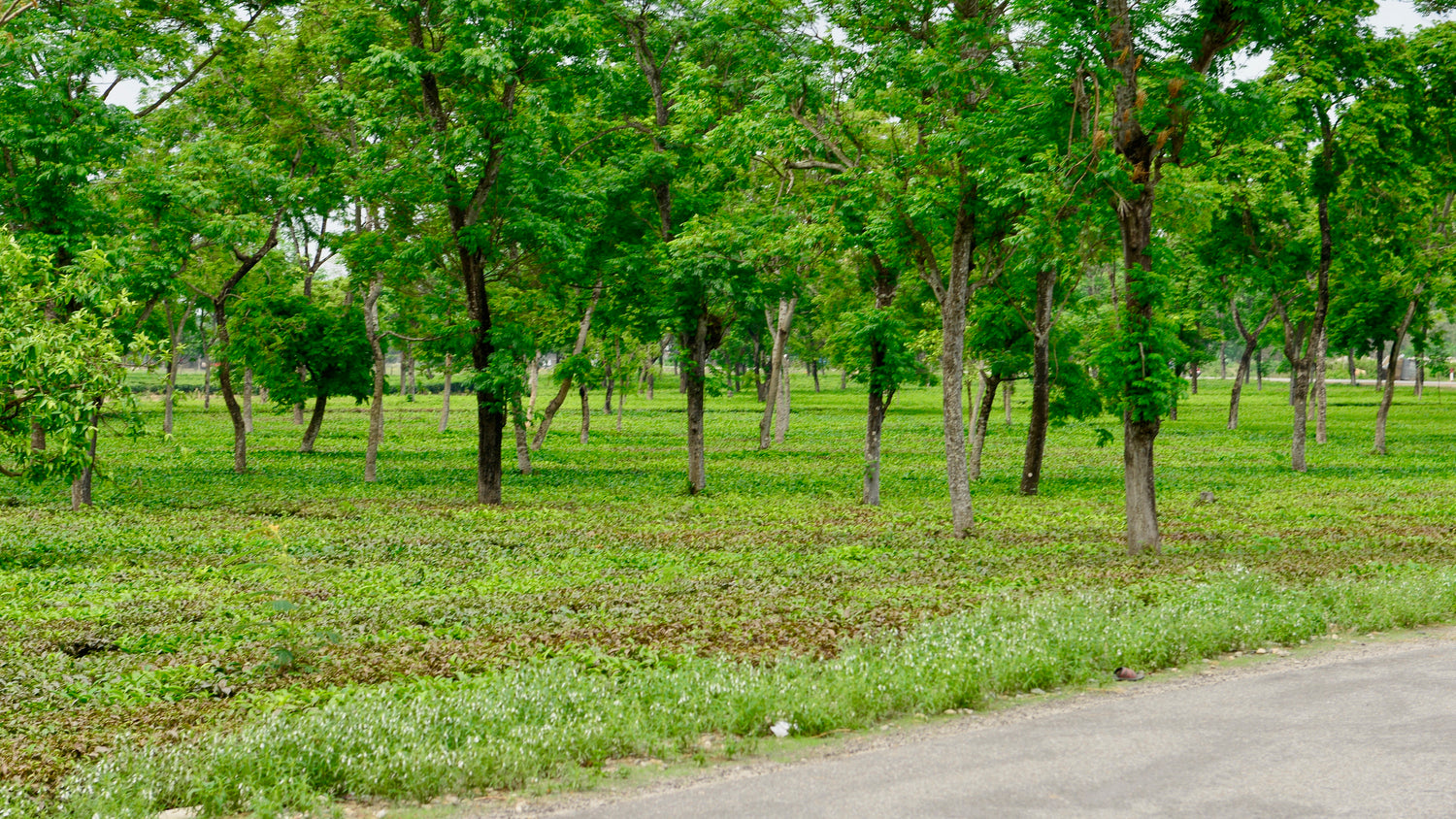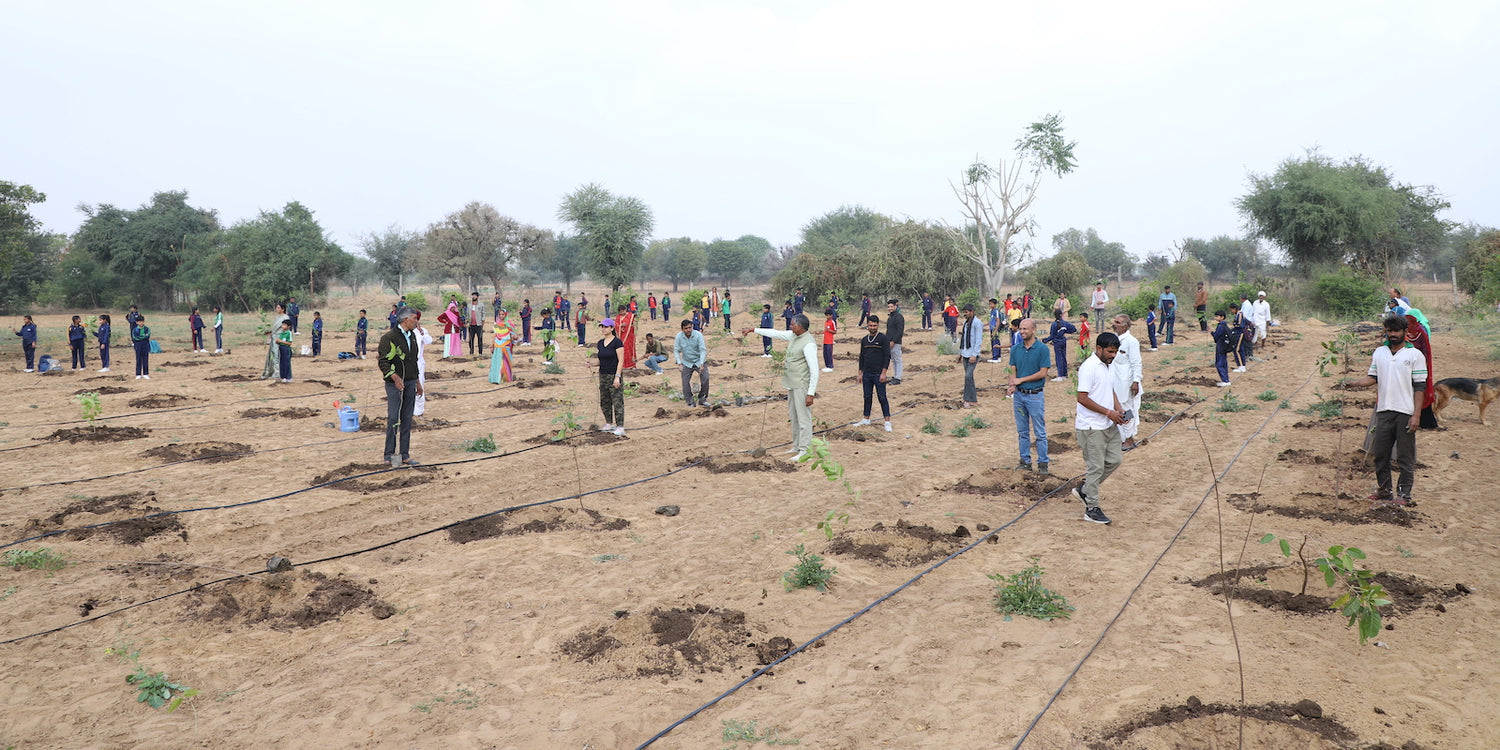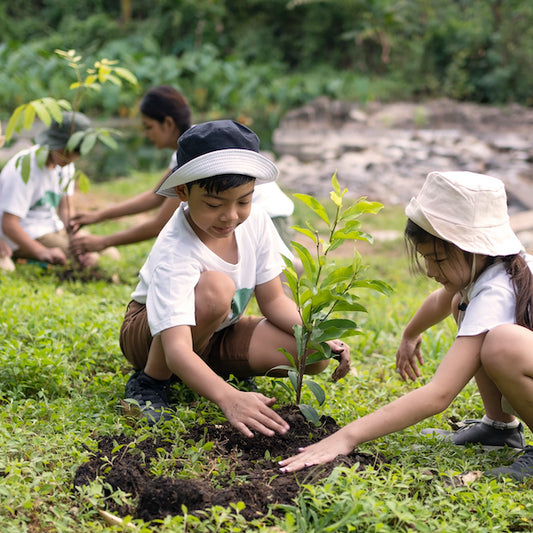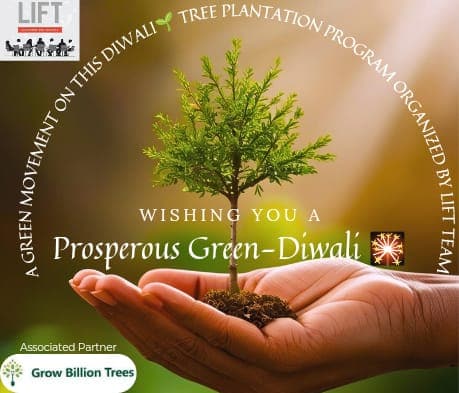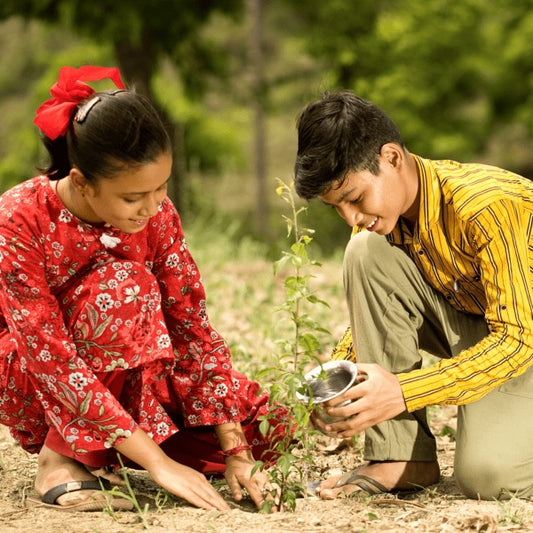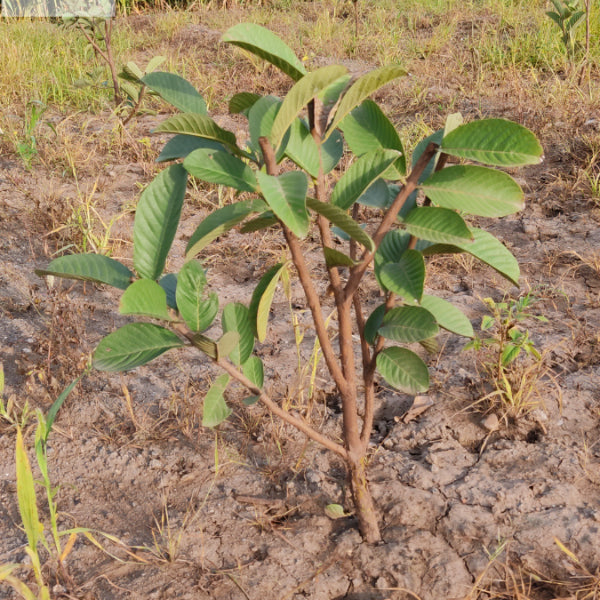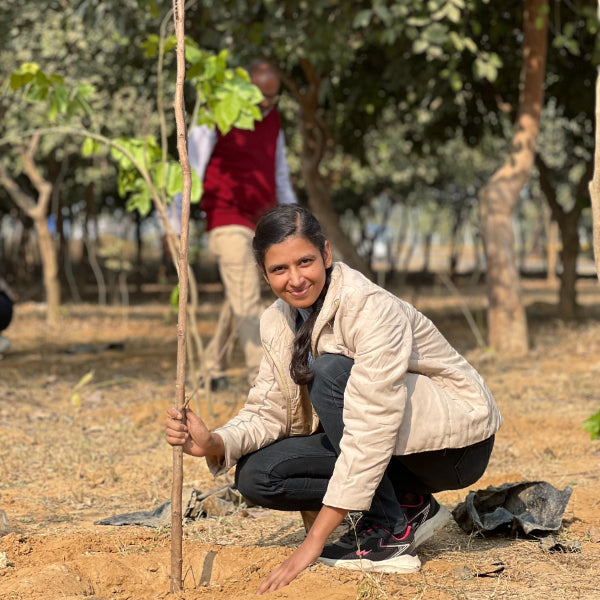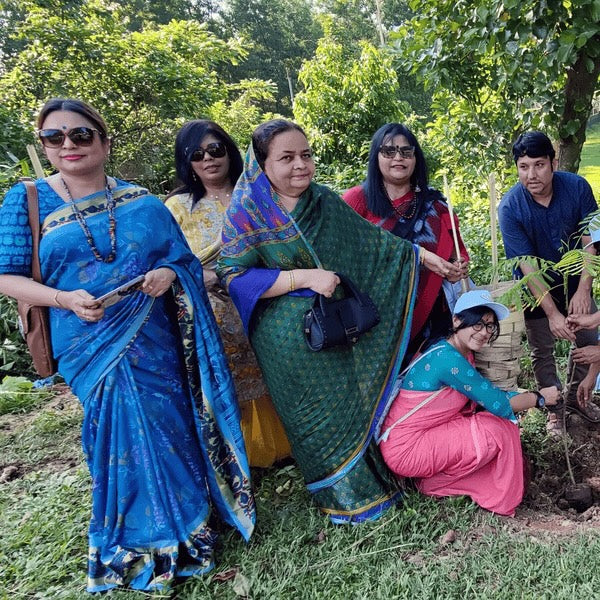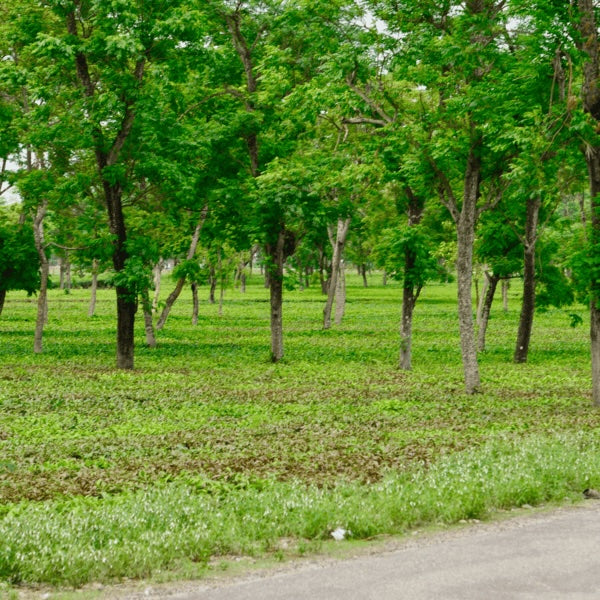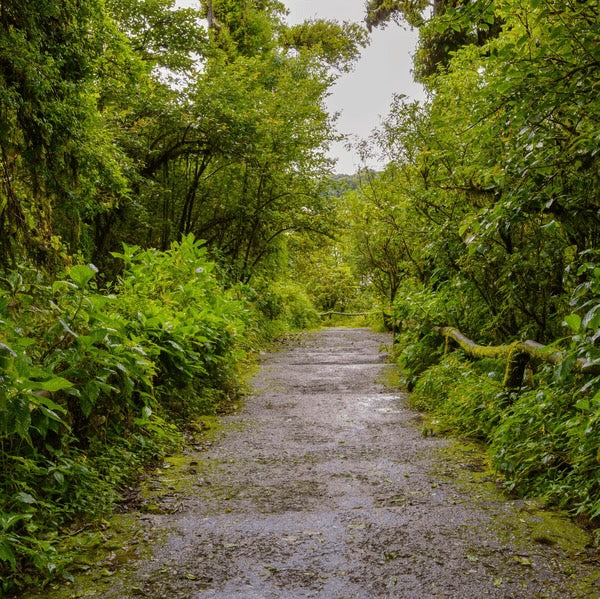Agroforestry in Sikkim: Organic and Tree-Based Growth
Agroforestry in Sikkim is a remarkable blend of agriculture and forestry, creating a sustainable ecosystem that benefits both farmers and the environm Read more
Connect with us
-
👥 Corporates
If you are looking for:
- 🌲 Tree Plantation Events
- 📊 CSR Projects
📧 corporate@growbilliontrees.com
📞 +91 9699723523
💬 +91 9325931304 WhatsApp (Only)
🕒 Mon - Sat | 10am - 7pm IST
-
🧩 Tree Plantation NGOs
If you are looking for:
- 💰 Financial Assistance
- 🤝 Operational Support
📧 support@growbilliontrees.com
📞 +91 9699723523
💬 +91 9325931304 WhatsApp (Only)
🕒 Mon - Sat | 10am - 7pm IST
-
🌼 Individuals
If you are looking for:
- 👥 Group Tree Plantation Drive
- 🌳 Bulk Tree Plantation
📞 +91 9699723523
💬 +91 9325931304 WhatsApp (Only)
🕒 Mon - Sat | 10am - 7pm IST
Trending
Trees for Corporates
Agroforestry in Sikkim: Organic and Tree-Based Growth
Agroforestry in Sikkim is a remarkable blend of agriculture and forestry, creating a sustainable ecosystem that benefits both farmers and the environment. 🌳 This unique approach not only enhances biodiversity but also improves soil health and increases crop yields.
Sikkim, a small state in northeastern India, is renowned for its organic farming practices. In 2003, it became the first fully organic state in India, setting a precedent for sustainable agriculture. 🌱 The integration of trees into farming systems has been a game-changer, promoting resilience against climate change and enhancing food security.
Agroforestry systems in Sikkim typically involve the cultivation of fruit trees, medicinal plants, and timber species alongside traditional crops. This diversity not only provides multiple income sources for farmers but also supports local wildlife. 🦋
One of the most popular agroforestry practices in Sikkim is the cultivation of cardamom under the shade of trees. Cardamom is a high-value spice that thrives in the region's unique climatic conditions. 🌧️ The trees provide shade, which helps maintain soil moisture and reduces the need for chemical fertilizers.
Scientific studies have shown that agroforestry can increase crop yields by up to 30% compared to conventional farming methods. 🌾 This is due to improved soil structure, enhanced nutrient cycling, and better pest management. Farmers in Sikkim have reported higher incomes and improved livelihoods through these practices.
Moreover, agroforestry plays a crucial role in carbon sequestration. 🌍 Trees absorb carbon dioxide from the atmosphere, helping to mitigate climate change. Sikkim's agroforestry systems are estimated to sequester around 1.5 million tons of CO2 annually, making a significant contribution to global efforts against climate change.
Fun fact: Sikkim is home to over 5,000 species of flowering plants, many of which are used in agroforestry systems. 🌼 This rich biodiversity not only supports local ecosystems but also provides a wealth of resources for traditional medicine and food.
Historically, the indigenous communities of Sikkim have practiced agroforestry for centuries. They understood the importance of maintaining a balance between agriculture and forestry, ensuring the sustainability of their livelihoods. 🌿 Today, this traditional knowledge is being combined with modern scientific practices to create innovative agroforestry systems.
In addition to enhancing agricultural productivity, agroforestry in Sikkim contributes to soil conservation. The root systems of trees help prevent soil erosion, especially in the hilly terrain of the region. 🌄 This is particularly important in the context of increasing rainfall and landslide risks due to climate change.
Water conservation is another significant benefit of agroforestry. Trees help retain moisture in the soil, reducing the need for irrigation. 💧 This is crucial in a region where water scarcity can be a challenge during dry spells.
As the world faces the challenges of climate change and food security, agroforestry presents a viable solution. 🌍 It promotes sustainable land use, enhances biodiversity, and supports local economies. Sikkim is leading the way in demonstrating the potential of agroforestry as a model for sustainable development.
Organizations like Grow Billion Trees are actively working to promote agroforestry across India. 🌱 Their mission is to plant billions of trees, creating a greener and more sustainable future. They focus on community engagement, education, and providing resources to farmers interested in agroforestry practices.
Grow Billion Trees is executing projects that aim to integrate tree planting with agricultural practices. 🌳 They provide training to farmers on agroforestry techniques, helping them understand the benefits of combining trees with crops. This not only enhances productivity but also contributes to environmental conservation.
Through their initiatives, Grow Billion Trees is fostering a sense of community among farmers. 🤝 They encourage collaboration and knowledge sharing, creating a network of agroforestry practitioners who can support each other in their sustainable farming journeys.
In addition to training, Grow Billion Trees also provides financial support for farmers transitioning to agroforestry. 💰 This includes access to seeds, saplings, and tools necessary for successful implementation. By reducing the financial burden, they empower farmers to adopt sustainable practices confidently.
The impact of these projects is already being felt across India. 🌏 Farmers are reporting increased yields, improved soil health, and enhanced resilience to climate change. The integration of trees into farming systems is transforming landscapes and livelihoods, creating a more sustainable future for all.
As we look to the future, the potential of agroforestry in Sikkim and beyond is immense. 🌟 By embracing this sustainable approach, we can create a harmonious balance between agriculture and forestry, ensuring food security and environmental health for generations to come.
In conclusion, agroforestry in Sikkim is not just a farming practice; it’s a movement towards sustainability. 🌿 With organizations like Grow Billion Trees leading the charge, the vision of a greener, healthier planet is becoming a reality. Together, we can cultivate a future where nature and agriculture thrive side by side.
Agroforestry Practices in Sikkim
agroforestry. This practice combines agriculture and forestry, creating a symbiotic relationship that benefits both crops and trees. Farmers in Sikkim are embracing this method, planting trees alongside their crops to enhance biodiversity, improve soil health, and increase yields. It’s like a farmer’s version of a buddy cop movie, where trees and crops team up to fight against pests and soil erosion. The result? A thriving ecosystem that not only feeds the locals but also attracts eco-tourists eager to witness this harmonious blend of nature and agriculture.
Organic Farming Techniques
In the lush valleys of Sikkim, organic farming is not just a trend; it’s a way of life. Farmers are ditching the chemical fertilizers and pesticides in favor of natural alternatives, proving that you can grow delicious produce without the synthetic baggage. Techniques like composting, crop rotation, and intercropping are the stars of the show, ensuring that the soil remains rich and the crops flourish. It’s like a spa day for the earth, rejuvenating it with love and care. Plus, organic produce from Sikkim is gaining popularity in markets far and wide, making it a hot commodity. So, if you’re looking for a taste of nature’s best, Sikkim’s organic farms are where the magic happens.
Sustainable Land Management
In the quest for a greener planet, sustainable land management is the knight in shining armor. Sikkim is leading the charge with practices that ensure the land remains productive for generations to come. By integrating agroforestry, farmers are not just thinking about today’s harvest but are also safeguarding the future. Techniques like contour farming and agroecology are helping to combat soil erosion and maintain water quality. It’s like giving Mother Nature a high-five while ensuring that the land remains fertile and vibrant. With sustainable land management, Sikkim is setting an example for others to follow, proving that you can farm smart while keeping the environment in mind.
Biodiversity Conservation
Sikkim is a biodiversity hotspot, and agroforestry plays a crucial role in conserving this natural treasure. By planting a variety of trees and crops, farmers are creating habitats for countless species, from birds to beneficial insects. It’s like hosting a wildlife party where everyone is invited, and the more, the merrier! This diversity not only supports the ecosystem but also enhances crop resilience against pests and diseases. So, while farmers are busy growing their produce, they’re also nurturing the environment. In Sikkim, biodiversity conservation isn’t just a buzzword; it’s a lifestyle that ensures the region remains a vibrant tapestry of life.
Climate Resilience
In a world where climate change is the villain of the story, Sikkim’s agroforestry practices are the heroes. By integrating trees into agricultural systems, farmers are building resilience against the unpredictable whims of weather. Trees provide shade, reduce soil temperature, and improve moisture retention, making crops less vulnerable to droughts and floods. It’s like having a trusty umbrella on a rainy day—always there to save the crops from the elements. As climate challenges loom, Sikkim’s approach to agroforestry is a beacon of hope, showcasing how smart farming can adapt and thrive in changing conditions.
Economic Benefits of Agroforestry
Who said saving the planet can’t be profitable? In Sikkim, agroforestry is not just about environmental benefits; it’s also a savvy economic strategy. By diversifying their income sources, farmers can tap into multiple markets, from timber to fruits and nuts. This diversification acts like a financial safety net, cushioning them against market fluctuations. Plus, with the growing demand for organic and sustainably sourced products, Sikkim’s farmers are cashing in on their eco-friendly practices. It’s a win-win situation where the environment flourishes, and wallets get a little fatter. In the world of agroforestry, Sikkim is proving that green can indeed be gold.
Community Involvement in Agroforestry
In Sikkim, agroforestry isn’t just a solo act; it’s a community affair. Farmers are banding together, sharing knowledge and resources to enhance their practices. Workshops, training sessions, and cooperative farming initiatives are fostering a sense of camaraderie among locals. It’s like a potluck dinner where everyone brings their best dish, and the result is a feast of knowledge and innovation. This community involvement not only strengthens bonds but also amplifies the impact of agroforestry practices. Together, they’re creating a resilient agricultural landscape that benefits everyone, proving that teamwork makes the dream work in the world of sustainable farming.
Agroforestry Policy and Support
For agroforestry to thrive, supportive policies are essential, and Sikkim is leading the way. The government is rolling out initiatives that promote sustainable practices, providing farmers with the resources and training they need to succeed. From financial incentives to technical support, these policies are like a safety net, ensuring that farmers can take the leap into agroforestry without fear. It’s a smart investment in the future, as healthy ecosystems lead to healthier communities. With the right support, Sikkim is paving the way for a robust agroforestry sector that not only benefits farmers but also contributes to the region’s overall sustainability.
You may like
Corporate Plantations
FAQ
What is agroforestry and why is it important in Sikkim?
Agroforestry is the practice of integrating trees and shrubs into agricultural landscapes, creating a symbiotic relationship between crops and forestry. In Sikkim, where organic farming is a way of life, agroforestry enhances biodiversity, improves soil health, and increases farmers' income. By combining tree-based growth with traditional farming, we not only boost productivity but also contribute to climate resilience. At Grow Billion Trees, we believe that this approach is a win-win for both farmers and the environment.
How does Grow Billion Trees promote agroforestry in Sikkim?
At Grow Billion Trees, we’re all about planting the seeds of change—literally! We provide farmers with the knowledge and resources to implement agroforestry practices. Our team offers training sessions, workshops, and access to high-quality saplings that are well-suited for Sikkim’s unique climate. By fostering a community of eco-conscious farmers, we’re not just growing trees; we’re cultivating a sustainable future.
What types of trees are best suited for agroforestry in Sikkim?
Sikkim’s diverse climate allows for a variety of tree species to thrive. We recommend native species like Alder, Oak, and various fruit trees such as Kiwi and Apple. These trees not only provide shade and improve soil fertility but also yield fruits that can be sold for extra income. At Grow Billion Trees, we help farmers select the best species to maximize both ecological and economic benefits.
How does agroforestry contribute to organic farming in Sikkim?
Agroforestry and organic farming are like peanut butter and jelly—perfect together! By integrating trees into organic farming systems, we enhance soil health, reduce pests, and improve water retention. This natural synergy leads to healthier crops and a more sustainable farming practice. At Grow Billion Trees, we’re committed to promoting this harmonious relationship, ensuring that Sikkim remains a beacon of organic excellence.
What are the economic benefits of agroforestry for farmers in Sikkim?
Agroforestry can be a game-changer for farmers in Sikkim. By diversifying income sources through timber, fruits, and other tree products, farmers can reduce their financial risks. Additionally, agroforestry practices often lead to increased crop yields and lower input costs. At Grow Billion Trees, we empower farmers to tap into these economic benefits, proving that growing trees can indeed grow wealth!
How does agroforestry help in combating climate change in Sikkim?
Agroforestry acts as a natural carbon sink, absorbing CO2 and mitigating climate change effects. In Sikkim, where climate variability is a concern, integrating trees into farming systems enhances resilience against extreme weather. At Grow Billion Trees, we’re not just planting trees; we’re planting hope for a cooler planet. By promoting agroforestry, we’re taking a stand against climate change, one tree at a time.
What role does community play in agroforestry initiatives in Sikkim?
Community is the backbone of successful agroforestry initiatives. At Grow Billion Trees, we believe in the power of collaboration. By bringing farmers together, we create a support network where knowledge, resources, and experiences are shared. This collective effort not only strengthens individual farms but also fosters a sense of belonging and purpose. Together, we’re growing a greener Sikkim!
How can individuals contribute to agroforestry efforts in Sikkim?
Individuals can play a vital role in supporting agroforestry in Sikkim by volunteering, donating, or simply spreading the word. At Grow Billion Trees, we welcome anyone who wants to get their hands dirty—figuratively or literally! Whether it’s participating in tree-planting events or advocating for sustainable practices, every little effort counts. Join us in our mission to grow a billion trees and make a lasting impact!

